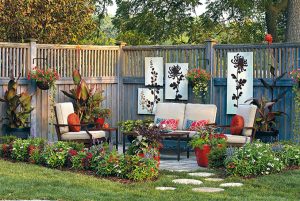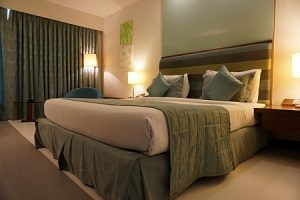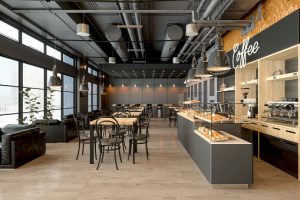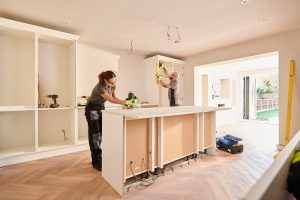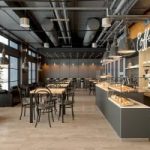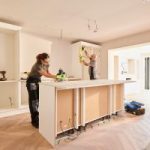In recent years, interior design has moved far beyond the traditional notion of mere decoration. What was once considered a luxury pursuit to make homes aesthetically pleasing has now evolved into a holistic approach that prioritizes mental well-being, sustainability, and functionality. As homeowners and designers shift their focus toward creating spaces that enhance health and comfort, interior design is taking on a transformative role in our daily lives.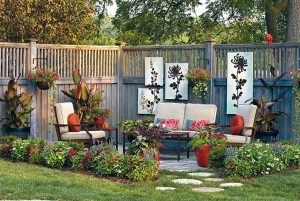
In this article, we will explore the emerging trends in interior design, how these changes are improving home spaces, and offer actionable tips on how to incorporate these concepts into your home.
1. Designing for Wellness: The Intersection of Aesthetics and Mental Health
With the growing awareness of mental health, home design has started to reflect the importance of creating calming, restful environments that support emotional well-being. A well-designed home can have a profound impact on stress reduction, productivity, and overall happiness. Today’s interior design is embracing biophilic elements and sensory-responsive designs to cultivate a peaceful environment.
Biophilic Design: Bringing Nature Indoors
Biophilic design is based on the idea that humans have an inherent connection to nature. By incorporating natural elements like wood, stone, plants, and water features, homes can feel more tranquil and revitalizing. Large windows that invite natural light, indoor plants that purify air, and natural textures in furniture and textiles are just some of the ways biophilic design has become popular.
Tip: Start by introducing natural materials, such as wood furniture or a stone countertop. Add houseplants like snake plants or fiddle-leaf figs to purify the air and create a calming ambiance.
Color Psychology: Shades that Soothe
Colors have a significant psychological impact. Cool tones such as blues, greens, and soft whites are known for their calming effect, while warm tones like yellows, oranges, and reds can evoke feelings of energy and excitement. Choosing the right palette based on your personality and needs can positively influence your mood.
Tip: Paint bedroom walls in soft blue or pastel shades for better relaxation. In high-energy spaces like home offices or workout rooms, go for more vibrant, invigorating hues.
2. Sustainability as a Core Principle: The Rise of Eco-Friendly Interiors
Sustainability is no longer a trend; it has become a necessity. With environmental concerns mounting, more homeowners are choosing eco-friendly materials, energy-efficient solutions, and sustainable practices in home design. Designing with sustainability in mind not only reduces our carbon footprint but also creates healthier living environments for families.
Sustainable Materials: Eco-Conscious Choices
The use of reclaimed wood, bamboo, recycled glass, and other eco-friendly materials is becoming more prevalent. These sustainable options are just as beautiful and durable as their traditional counterparts, making them an attractive choice for eco-conscious homeowners.
Tip: Look for furniture made from reclaimed or FSC-certified wood, which ensures the timber is harvested responsibly. Choose flooring made from sustainable materials like bamboo or cork.
Energy Efficiency: Smart Solutions for Sustainable Living
Energy-efficient lighting and appliances are key components of a sustainable home. The move towards LED lighting, solar panels, and smart thermostats is helping homeowners reduce their energy consumption without sacrificing style or comfort.
Tip: Install smart lighting systems that allow you to adjust brightness and color temperature, helping reduce energy costs while enhancing your home’s ambiance. Swap out incandescent bulbs for LEDs, which consume significantly less energy and last longer.
3. Multi-Functional Spaces: Adapting to Modern Lifestyles
The pandemic brought an unprecedented change in how we use our homes. With more people working remotely, homeschooling children, and spending more time at home, the need for flexible, multi-functional spaces has skyrocketed. Homes today need to be adaptable, serving multiple purposes without feeling cluttered or overwhelming.
Open-Concept Living: Maximizing Space and Flexibility
Open-concept designs are now more popular than ever, allowing homeowners to maximize space and create areas that can serve multiple functions. Combining living, dining, and kitchen spaces not only opens up a home visually but also makes it easier to transition between activities.
Tip: Use furniture strategically to divide open spaces. For instance, a sofa can act as a divider between a living room and a home office, while still maintaining an open feel.
I found a good home design website https://www.pntrac.com/t/4-479246-329981-264053, which has good home designs and pretty good deals, if you need to click the link below to check it out.
Modular and Transformable Furniture: Functional Design
Modular and transformable furniture, such as foldable desks, pull-out sofas, and adjustable shelving, is gaining traction as an innovative solution for multi-functional spaces. These pieces provide flexibility and save space, without compromising on style or comfort.
Tip: Consider investing in a murphy bed that folds away during the day, or modular shelving units that can be rearranged to fit your changing storage needs.
4. Personalization: A New Era of Individual Expression
Gone are the days of cookie-cutter designs. Today’s homeowners are craving spaces that reflect their personal stories, tastes, and values. Personalized interiors are gaining popularity as people look for ways to infuse their homes with character and meaning.
Custom Design: Tailoring Spaces to Your Needs
Custom-designed furniture, cabinetry, and décor pieces are now more accessible, thanks to advancements in technology and the growing number of artisans offering bespoke solutions. This allows homeowners to create unique, functional pieces that perfectly suit their needs.
Tip: Work with local artisans or small furniture businesses to create custom pieces that fit your space and style preferences. Even small touches like custom throw pillows or artwork can make a big difference.
Mixing Styles: Eclectic Design as a Form of Self-Expression
Mixing styles and periods, such as combining vintage with modern or rustic with minimalist, allows for a more eclectic and personalized look. This trend encourages homeowners to break free from strict design rules and create spaces that resonate on a deeper, emotional level.
Tip: Don’t be afraid to mix and match furniture styles or decor from different eras. Pair a modern sofa with a vintage coffee table or blend industrial lighting with boho textiles for a personalized touch.
Conclusion: Designing Homes for the Future
Interior design is no longer just about aesthetics; it is about creating homes that support wellness, sustainability, and flexibility in modern living. By focusing on biophilic elements, sustainable practices, and personalized touches, homeowners can create spaces that not only look beautiful but also promote health and well-being.
Incorporating these principles into your home doesn’t have to be daunting or expensive. Small changes, such as adding plants, choosing eco-friendly materials, or investing in multi-functional furniture, can make a significant difference. As we move towards a future where our homes play a larger role in our overall well-being, the importance of thoughtful interior design cannot be overstated.
This article provides fresh insights into the evolving world of interior design, emphasizing wellness, sustainability, and personalization. Let me know if you’d like to adjust or expand on any sections


